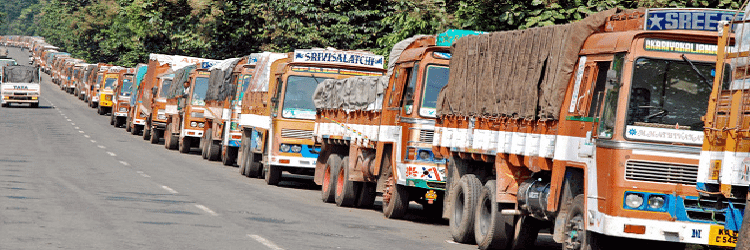
E-way bill rules and compliance under GST
The Electronic Way (e-way) bill is the new procedure introduced by the government to curb the tax evasion taking place under the current value added tax (VAT) laws. Each state presently requires various documentation like waybills, permit forms, declarations, challans, etc., for the transportation of goods. The e-way bill shall unify all these with a standard documentation procedure under the Goods and Services Tax (GST) regime.
What is an e-way bill?
As per the draft rules issued recently, every registered person who causes movement of goods, whether interstate or intrastate, is required to generate an e-way bill when the consignment value of the goods is more than Rs. 50,000. This occurs electronically before the movement of goods begins.
An e-way bill furnishes information relating to the goods being moved. Movement of goods may be:
- In relation to a supply
- For reasons other than supply
- Due to inward supply from an unregistered person
How to generate an e-way bill
A registered person shall furnish information relating to the transported goods in Part A of Form GST-INS-01. The registered person may also upload the tax invoice he issues in Form GST-INV-01 to auto populate Part A of the form.
Thereafter, the consignor or the consignee shall furnish details in Part B of Form GST-INS-01 and generate the e-way bill. Else the registered person shall furnish the transporter’s information in Part B, and the transporter shall generate the e-way bill himself based on the information furnished in Part A.
Upon generation of an e-way bill, a unique e-way bill number (EBN) shall be made available to the supplier, recipient, and transporter. The recipient must communicate his acceptance or rejection of the consignment. If no communication is received within 72 hours, it will be deemed accepted.
Responsibility of the transporter
If the e-way bill is not generated and the consignment value of goods is more than Rs. 50,000, the transporter may furnish the needed information in Form GST-INS-01 himself.
In the case of multiple consignments by the transporter in one conveyance, the transporter shall generate a consolidated e-way bill by furnishing all EBNs in Form GST-INS-02. In the case of multiple conveyances, the transporter shall generate a new e-way bill for each change in transit specifying the mode of transport before the transfer occurs.
Validity of an e-way bill
The validity of the bill shall depend on the distance the goods are transported:
| Distance | Validity period | |
| 1. | Less than 100 kms | 1 day | |
| 2. | 100 km or more but less than 300 kms | 3 days | |
| 3. | 300 km or more but less than 500 kms | 5 days | |
| 4. | 500 km or more but less than 1000 kms | 10 days | |
| 5. | 1000 kms or more | 15 days |
Cancellation
If the goods are not being transported as per the details furnished, the e-way bill must be canceled within 24 hours of its generation. An e-way bill cannot be canceled if it has been verified in transit.
Responsibility of the person in charge of conveyance
The person in charge of the conveyance shall carry:
- A copy of the e-way bill or EBN, physically or mapped to a Radio Frequency Identification Device (RFID)
- Invoice, bill of supply, or delivery challan as applicable
The commissioner may require a class of transporters to obtain a unique RFID, to embed the RFID onto the conveyance, and to map every e-way bill to the RFID before moving the goods.
Instead of an e-way bill, in certain circumstances the person in charge of conveyance may carry:
- Tax invoice of bill of supply or bill of entry
- A delivery challan when goods are transported other than by way of supply
Verifying documents and inspecting goods
The authority, approval, or permission of the commissioner must be obtained before any conveyance can be intercepted or physically verified, or before an e-way bill or EBN in physical form is verified. Physical verification can only occur once during the entire transit period unless specific information is received indicating the need for another inspection.
A summary of the inspection must be recorded online in Part A of Form GST-INS-03 by the proper officer within 24 hours of the inspection. The final report must be submitted in Part B within three days of inspection.
If a vehicle is intercepted and detained for more than 30 minutes, the transporter may note the delay in Form GST-INS-04.
Conclusion
The government has given serious thought to these rules, with the motive to reduce human intervention and eliminate officer discretion. However, it remains to be seen how the small transporters and SMEs cope with this scale of digitization. Revenue Secretary Hasmukh Adhia has promised that the government won’t be overly harsh in the initial stages of e-way and shall only observe the behavior of the transporters. Thus, penalties for non-compliance will not be part of the process from day one but will eventually be instituted.
Avalara is an experienced application service provider (ASP), partnering with authorized GST Suvidha Providers (GSPs). To understand how our cloud-based application, Avalara India GST, can help you with GST compliance automation, contact us through https://www.avalara.com/in/products/gst-returns-filing.



